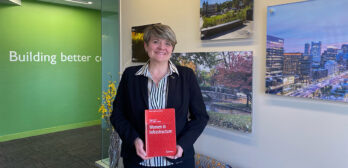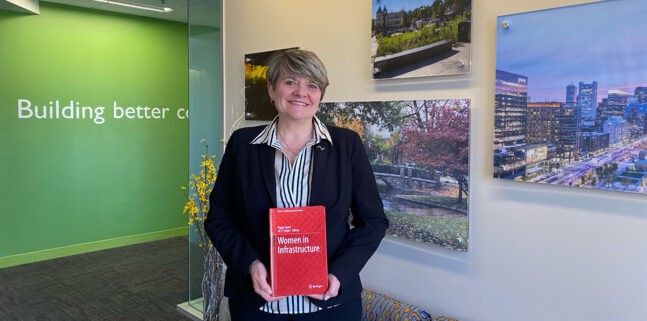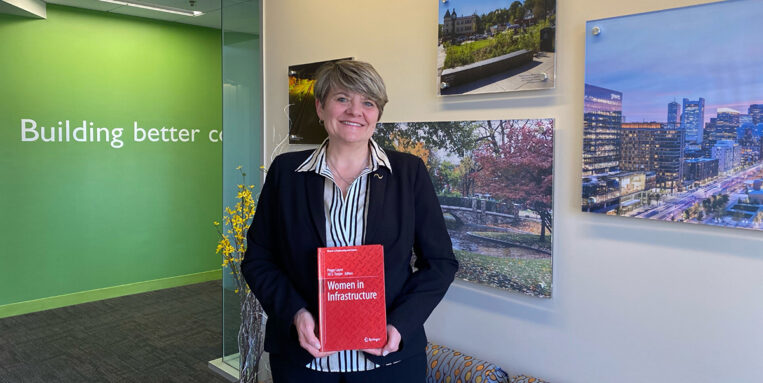Infrastructure impacts all of our lives on a daily basis. To close out this year’s Infrastructure Week, we’re excited to share that our own President & CEO Lisa A. Brothers, PE, ENV SP, LEED AP BD+C wrote a chapter titled Roadway Infrastructure for the book Women in Infrastructure, published by Springer as part of their Women in Engineering and Science series!
Every four years, the American Society of Civil Engineers (ASCE) issues the Report Card for America’s Infrastructure, which looks at 18 different categories of infrastructure and assigns each a letter grade based on how well that category performing at a national and state level. This Report Card highlights what’s working, what isn’t, and how much investment is needed to better serve our communities and economy.
Using the ASCE Report Card categories as a starting point, Women in Infrastructure provides clear information about the important role that infrastructure plays in our communities and the economy. With each chapter authored by a woman working in the field – including Lisa A. Brothers’ chapter on Roadway Infrastructure – the book also highlights the contributions and knowledge of women engineers. With women still significantly underrepresented in the industry – according to the latest data from the Bureau of Labor Statistics, women make up only 17.4% of civil engineers and 12.6% of surveying and mapping technicians (and women of color are even more underrepresented) – highlighting these women can help provide inspiration and guidance for younger and future engineers.
To learn more about the book and order your own personal copy, visit the Springer website here.
Learn More About the Roadway Infrastructure Chapter
Lisa Brothers wrote chapter five, titled Roadway Infrastructure, of Women in Infrastructure. The abstract for the chapter reads, “Roads are an integral part of everyone’s daily life and have a huge economic impact. This chapter discusses how roads are designed, shares best practices for how to improve safety and reduce congestion, and reveals how engineers can work with communities to design and construct roadway projects that improve safety, protect or restore the environment, and meet the unique needs of the community. Using project case studies that range from rural municipalities to urban environments, this chapter highlights how integrating green infrastructure solutions into roadway projects allows communities to address resilience and environmental concerns while simultaneously addressing roadway safety issues and capacity deficiencies. We’ll then discuss the evolution of roadway infrastructure and what communities and engineers need to consider for the future.”



